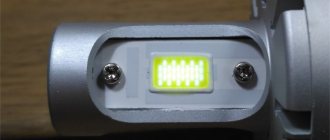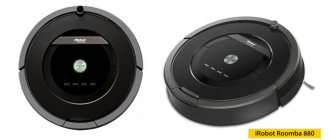A stabilizer for boiler equipment is necessary to protect pumps and automation units from power surges and clean them from frequency distortions. It is used in gardens, country houses, and rural houses where there is instability in the electrical network. The device protects precision equipment responsible for the operation of the heating system from damage. Selection indicators: pump or control unit power taking into account starting currents, error value, overall dimensions.
POWERMAN AVS 500 S – affordable price
Single-phase stabilizer for working with gas boiler equipment with a power of up to 200~300 watts. It is small in size and weight. Made in a wall-mounted version. Equipped with a European output socket. Stabilizes the input parameters of the electric current.
Built-in filters cut off extraneous frequency noise and remove interference. Visual control is carried out on a liquid crystal display. The current state of the structure is reflected by light indicators.
Pros:
- Compact, light weight, fulfills its functions.
- Peak load and short circuit protection.
- Inexpensive, easy to install and connect.
Minuses:
- The socket is at the bottom, slightly inconvenient.
- For some reason there is no second indicator.
Recommendations: 13 best gas boilers
13 best solid fuel boilers
14 best electric boilers
The best floor-mounted voltage stabilizers for a gas boiler
Floor-standing placement expands the options for manufacturers to equip stabilizers because there is no need for a compact housing or low weight. Often in this category you can find very powerful models up to 2000 W, but there are also quite compact ones with 500-600 W.
Floor stabilizers can be installed under a table, on a table, or on a special shelf. They are often placed in a niche or bedside table. This eliminates the need for owners to drill into walls and lay wires and cable ducts. The efficiency of such models varies from 85 to 97%. Interaction with the input voltage range can be from 140 to 270 V.
| RESANTA ACH-500/1-C | Daewoo Power Products DW-TZM1kVA | |||||||
| Active power, W | 500 | 1000 | ||||||
| Input operating voltage, V | 140-260 | 140-270 | ||||||
| Dimensions (WxHxD), mm | 110x133x134 | 306x363x433 | ||||||
| Response time, ms | 7 | 20 | ||||||
| Weight, kg | 2,5 | 3,16 | ||||||
RESANTA ACH-500/1-C
Compact model with a retractable rubber handle for carrying. It is a relay type and has a power of 500 V. The operating speed is 35 V/s. Works with a voltage range of 140-260 V.
+ Advantages of RESANT ACH-500/1-C
- The digital display allows you to see the displayed values from afar.
- The steel case is durable and will protect key parts in the event of a fall or impact.
- Silent operation allows use near the entrance to the bedroom.
- Easy installation and connection.
- Works for a long time without breakdowns.
- Efficiency 97%.
- Rubber feet ensure a stable position even on vibrating, slippery surfaces.
- Response time 7 ms.
— Disadvantages of RESANT ACH-500/1-C
- At first it emits an unpleasant odor when working.
- The design is very simple, almost “Soviet”.
- If there is no space on the floor or other surface, you will have to make a shelf.
- A short power cord that most users had to extend.
- Only one outlet.
This voltage stabilizer will be the best for a small boiler room in a private house, where it can be installed in close proximity to the boiler. Dimensions 110x133x134 mm and weight 2.5 kg will not make this difficult at all. The owners do not have to drill or screw anything. Perforations in two rows on the body promote active natural cooling.
LENZ TECHNIC R500W – accuracy and price
Automated input voltage stabilization device. Used in private homes, medical institutions, office and administrative premises. Built-in protection mechanisms against overheating and overload during intensive work.
The stabilizer has low error and high accuracy of output parameters. It is possible to connect two consumers with a total power not exceeding 500 watts. It neutralizes a wide voltage range and has a 100% power factor.
Pros:
- Compact, accurate, low level of error.
- Bright color LCD screen. Easy connection.
- My two consumers are powered by a gas boiler and a circulation pump.
Minuses:
- Operation in 0.02 seconds, there are better indicators.
What types of stabilizers are suitable for boilers
Manufacturers produce many stabilizers of various models. The devices on the market can be divided into four types:
- electromechanical (servo-drive)
- relay
- electronic (thyristor)
- inverter
Each type has its own characteristics, pros and cons, which must be taken into account when selecting. Here is a brief overview of the equipment for each type.
Electromechanical
The principle of operation is based on the circular windings of a transformer, along which carbon brushes, controlled by a servo drive, move.
Pros: low cost, wide range of input voltage, accuracy and smoothness of regulation, ability to withstand overloads, ability to work at low temperatures and high humidity, reliable system of protection against overvoltage and overheating, long service life.
Disadvantages: low speed of adjustment (response), increased noise level, increased weight and dimensions compared to other types of devices.
Important! It is strictly forbidden to install electromechanical stabilizers in rooms with gas equipment! This limitation is due to the fact that during operation of a MV of this type, the formation of sparks is possible. If gas leaks, it may cause an explosion.
Such stabilizers can be installed for heating boilers, but it is not recommended to use them if there are frequent noticeable voltage surges. Also, due to safety requirements, a separate installation location is required.
Rucelf BOILER-600 – application in dachas
The design is specially designed to work in tandem with heating equipment in conditions of unstable power grid indicators. Used in rural areas, places with constant voltage fluctuations.
Designed to work with gas boilers, heating equipment control units, circulation pumps, household and electronic appliances. Has a wide input voltage range. Does not distort the sine wave.
Pros:
- Clear operation, works well with a gas boiler.
- Quick installation and connection, affordable price.
- Quiet, durable body.
Minuses:
- Consumers do not note any shortcomings.
Why do you need a voltage stabilizer for a gas boiler?
Electricity supply to a gas boiler is required for several components:
- circulation pump;
- turbocharger fan;
- electronic control board with a connected network of sensors (self-diagnosis).
The first two devices are quite resistant to changes in operating voltage. The most demanding consumer groups include the control board. It has fine settings that allow you to determine the presence of a flame on the burner and other safety settings. Overheating of the coolant, pressure drop, lack of circulation and other important parameters of the boiler are immediately detected.
Any surge or change in power supply can cause a system failure and cause a series of false sensor alarms.
If this situation repeats frequently, the control board will burn out. A new unit is expensive, additional costs will be required for replacing the element and new settings of the boiler systems.
It is unknown what the result of such a replacement will be. since the level of training of service center specialists varies. In addition, during the renovation, the house will remain without heating (unless there is a backup boiler, which is rare).
Therefore, simultaneously with the purchase of the boiler, it is necessary to buy a voltage stabilizer and use it from the very first days of the system’s operation.
IMPORTANT! Stabilizers do not save you from a complete power outage. For remote villages, this is a consequence of worn-out and overloaded networks.
If this situation has become the norm, it is better to purchase a non-volatile boiler that does not require power supply and is more reliable in conditions of unstable energy supply.
DAEWOO DW-TM1kVA – quality and power
Single-phase wall-mounted voltage stabilization device. It is distinguished by high build quality and stable output indicators. The response time does not exceed 20 milliseconds. The total power allows you to connect two consumers, taking into account the magnitude of the starting currents.
Reliability of control is ensured by an electronic unit based on microprocessors. The stabilizer has a low level of its own noise. Provides protection against short circuit, overload and overheating.
Pros:
- High-quality assembly, nice design, powerful.
- Filters, short circuit protection. Doesn't make any noise at all when the voltage isn't floating.
- Bright and large display, easy wall mounting, connection of two consumers.
Minuses:
- The cord is terribly short, and you can’t hang it close to the boiler - it can heat up.
- Beautiful and poorly informative instructions.
RUCELF BOILER-1200 – protection of boiler units
Single-phase stabilizer for reliable provision of boiler heating equipment with stabilized voltage. It is implemented in a wall-mounted version, which allows you to save space and make more efficient use of the room area.
Levels out voltage surges and eliminates impulse noise. Works over a wide input range. It has a high motor life, the internal components are enclosed in a durable and rigid steel body.
Pros:
- Performs basic functions successfully and works in a basement environment.
- Powerful – boiler and circulation boiler connected.
- Durable, rigid case, small in size, mounted on the wall.
Minuses:
- No input fuse.
Energy VOLTRON - 1,000 5% E0101-0154 - power and accuracy
Wall mounted stabilizer. Levels out input distortions of network electricity. It is distinguished by high accuracy and small error coefficient.
Works in tandem with computer and household appliances, heating equipment, control units from the “smart home” series.
It is used in private homes, medical institutions and laboratories, and office premises. Reaction time is less than 10 milliseconds. Works outdoors in any weather.
Pros:
- High-quality assembly, beautiful design, precision.
- Powerful device, good output parameters, small error.
- Small size, LED display.
Minuses:
- Only one output socket.
Bastion Teplocom ST-555 – super compact design
Small-sized voltage stabilization device. Levels out differences in input parameters of the electrical network. The model is specially designed to protect the heating system and individual components, including gas boilers. Has a remote socket on a flexible cable.
The stabilizer is designed for use in basement conditions with high humidity. Provides protection against lightning strikes.
Pros:
- Super small size, easy to install, lightweight.
- Completely fulfills its duties and is quite accurate.
- Bright LED indication, replaces the night light at night.
Minuses:
- Loud, very good clicks when working.
- The output voltage fluctuates and there is instability in operation.
How to choose a voltage stabilizer for a gas boiler: popular options and their technical review
Many modern gas boilers are a very complex “organism”, the highly efficient and stable operation of which in many modes is ensured by their “brain” - an electronic automatic monitoring and control unit and an associated system of solenoid valves and taps. In addition, a circulation pump may be provided in the boiler design itself, or installed in close proximity to it, ensuring the movement of coolant through the heating circuits. Well, gas boilers with a closed combustion chamber, in addition to this, also require the operation of fans that provide forced air supply for gas combustion and removal of combustion products through a coaxial chimney.
Voltage stabilizer for a gas boiler: how to choose
All these electromechanical and electronic units, modules and devices require stable power to operate correctly. However, it would be the height of frivolity to directly connect the boiler to a 220 volt household network. It’s no secret how different the voltage in it can be from the declared parameters, and such deviations, or even worse – sharp jumps in one direction or another, lead to instability of the equipment’s operation or even to its fatal failure. This means that you need a voltage stabilizer for a gas boiler; how to choose it will be discussed in this publication.
How necessary is a voltage stabilizer for a gas boiler?
There will certainly be skeptics who will question the very need to equip the boiler with a voltage stabilizer. Apparently, in the minds of such people, old models of heating equipment are still depicted, all automation of which was reduced to bimetallic heating sensors that turn off or open the gas supply to the burner as the coolant reaches certain temperature thresholds. However, a modern boiler is on a completely different level. The electronics of gas heating units opens up the broadest possibilities for ensuring maximum efficiency along with high efficiency and ensuring the safe operation of the equipment.
Control panels of modern gas boilers - rich in functional options, control and safety systems
- Stepwise regulation of heating levels is gradually being replaced by flame modulation - the automation itself determines the number of burners required at the current moment and the height of the flame in them.
- Modern boilers are equipped with a function of smooth ignition, reducing the combustion intensity when the last few degrees rise to the set level - all this reduces the number of equipment restarts and ensures extremely smooth operation.
- Post-circulation of the pump becomes a useful option - after turning off the burners, the coolant moves for a few more minutes to achieve even heating in all areas of the heating circuit.
- Modern electronic circuits are equipped with “artificial intelligence” - weather-dependent automation independently monitors current weather changes, analyzes the relationship between conditions outside and in the apartment, and develops the most optimal algorithm for the operation of the heating system. all this gives a significant effect of saving resources.
- Many boilers are designed to provide heat to several heating circuits with different temperatures. All these settings can be stored in the device’s memory with programming by days of the week and hours throughout the day - the most comfortable conditions will be created during those periods when they are really in demand.
- The automation of a modern boiler will never allow the water in the system to freeze during a long absence of the owners. Moreover, if the equipment has not been used for a certain period, the control unit will spontaneously give a command to switch the electromagnetic valves to several positions, to briefly start the circulation pump - so as not to create sticking, valve sticking, stagnation in the circuits, etc.
- And, of course, all modern boilers are saturated with safety levels designed to prevent the creation of emergency situations in the event of certain deviations from the norm - a drop in draft, pressure in the gas main or in heating circuits, in case of accidental attenuation and in other abnormal cases.
However, all this rich and useful functionality becomes available only with a stable power supply.
Of course, any modern equipment is capable of operating in a certain input voltage range - this is indicated in the technical documentation of the product, for example: 220 ± 15%. But, unfortunately, even these limits do not guarantee the uninterrupted functioning of the automation - voltage drops can be much more significant. And it will be even more fortunate if such a difference only causes a temporary failure in the operation of the heating system (which, of course, is in itself extremely undesirable). It is much worse when an unstable input voltage leads to burnout of electronic circuit elements, or even complete burnout of printed circuit boards. In this case, it is no longer possible to do without expensive repairs, and under certain unfavorable circumstances, even without a complete replacement of the equipment.
Possible consequences of changes in mains voltage - burnt-out boards of electronic control units for boilers
And all this often happens because the owners neglected to install an input voltage stabilizer.
We should not hope that, they say, there are no voltage drops in our house (village), or that they are so rare and insignificant that it is not worth purchasing additional equipment. This is a profound mistake, fraught with serious consequences. After all, the nature of voltage surges can be different, and no one is immune from such a “cataclysm.”
- The development or modernization of power lines often does not keep up with the level of consumption - the saturation of modern human life with electrical appliances is strikingly different from the indicators even ten years ago, and many power lines are much more “venerable” in age. There is no guarantee that in a year or two the power supply line, which today seems flawless, will cope just as well with the load that is increasing day by day.
Even the most reliable power lines are not completely immune to natural disasters.
- No one can foresee natural disasters. Hurricane winds, ice on the wires, falling trees and many other accidents - and then a wire breaks, accompanied by an instantaneous sharp phase imbalance and, accordingly, a voltage surge.
- The “human factor” can never be ruled out. Unskilled actions of some “craftsman” - a neighbor who independently climbed into the switchboard in the entrance, an error or negligence of an electrician, incompletely incorrectly installed in-house wiring, vandalism of individual “individuals” and other reasons - all this also gives a very high probability of a sharp power surge, which can be fatal to the boiler electronics.
In a word, if a prudent owner really wants to protect his equipment from unforeseen circumstances, he will definitely purchase a voltage stabilizer for a gas boiler, not paying attention to the skepticism of others or “good advisers”. And the only question is how to choose the optimal device that will ensure the uninterrupted operation of the equipment and the safety of its operation to the maximum extent.
Properly laid in-house electrical networks are a guarantee of safety!
Laying home or apartment electrical wiring does not tolerate negligence, disregard for existing norms and rules, or ill-considered decisions. How to properly organize electrical wiring in your home - read the special publication on our portal. And another article will tell you in detail about the optimal installation of an electrical distribution board .
Functions of voltage stabilizers, types and features of the device
The functions of the stabilizer for heating equipment are simple and clear. When the mains voltage changes within a certain range of its capabilities, the device must provide power to the equipment with characteristics that correspond to the standard or as close as possible to it. In the event that the surges or drops are so large that they go beyond the stabilizer’s inherent capabilities, its circuit must completely interrupt the power circuit until the input indicators return to the established range. This ensures the correct functioning of all equipment connected to the stabilizer and prevents its failure due to unacceptably large differences.
A wide range of devices of this principle of operation is presented to the attention of consumers, in a wide variety of designs and in a wide range of operational capabilities.
The range of voltage stabilizers offered for sale is very wide.
But if in most cases the emergency shutdown function of the device is handled by a device similar in action - a voltage safety relay - then the issue of voltage stabilization can be solved in different ways. Thus, stabilizers of electromechanical, relay and electronic principles of operation are distinguished.
- In electromechanical stabilizers, voltage equalization to the required level is performed by moving current-collecting carbon brushes along the circular winding of the autotransformer. The moving part is moved using a built-in servo drive.
Schematic diagram of an electromechanical voltage stabilizer
1 – turns of the autotransformer winding;
2 – current-collecting carbon brush;
3 – servo drive.
Such a scheme has proven itself well - it is distinguished by high stabilization accuracy (within ± 3%), and the price of such devices is in the category of the most affordable. However, electromechanical devices have a number of features that limit their use specifically with gas equipment.
The fact is that sparking can occur between the carbon brush and the current collector of the autotransformer, which especially increases as this unit wears out. And in the boiler room the use of electrical appliances that may cause sparking is strictly prohibited - simply for safety reasons. You can, of course, take the stabilizer into a residential area, but its operation is accompanied by audible noise, which not everyone will like. In addition, the performance of such a stabilizer still leaves much to be desired - the total response time to a voltage drop even reaches 2 seconds, which is too much for the sensitive electronics of a modern boiler.
In addition, such devices are not particularly durable - simply due to the presence of kinematics and friction units.
Conclusion - it makes sense to abandon the use of an electromechanical stabilizer in conjunction with a gas boiler or use it with special precautions.
voltage stabilizer for gas boiler
- Relay stabilizers are designed differently. Switching between the windings of the transformer, ensuring a change in voltage towards the norm, is done using relays - there can be from four to five to a dozen or more (the more, the higher the level of stabilization). There is no sparking of contacts in such devices - each cut is enclosed in a sealed housing.
Basic design of a small relay voltage stabilizer
1 – autotransformer winding terminals
2 – group of relays that provide switching between outputs.
Such devices, of course, have their drawbacks, and first of all these are stepwise adjustment and not very outstanding accuracy of the output voltage - usually in the range of ± 8%, which, however, is quite enough for most devices.
But relay stabilizers are distinguished by their speed of response to changes in the network, the ability to withstand power overloads, and a wide range of permissible input voltage. Such devices serve for a long time and trouble-free, and their price is low. A slight background noise from the actuation and switching of the relay can be considered a conditional disadvantage, but in a boiler room environment this is unlikely to be significant.
Currently, relay stabilizers are among the most popular among consumers.
- A big step forward was the emergence of purely electronic stabilizers. In them, the role of keys for switching between windings is performed by semiconductor elements - triacs or thyristors, which ensures the maximum speed of the prior, which is incomparable even with a relay circuit.
In electronic stabilizers, the role of keys is performed by semiconductor elements - thyristors or triacs.
The complete absence of “mechanics” not only speeds up the stabilization process, but also makes the device the most durable among all available varieties. The accuracy of stabilization directly depends on the number of control stages - there is an analogy with relay priors. Plus, electronic stabilizers are the most compact, absolutely silent, and unpretentious to external operating conditions.
Of course, a stabilizer of this type will be the best solution under any operating conditions - there are simply no significant shortcomings comparable in any way to other types. The only thing that can stop a potential buyer is the fairly high price of such products.
There are other types of stabilizers, including high-tech ones, with double inverter voltage conversion and almost perfect smooth equalization. However, for boiler equipment such devices are still seen as an excessive luxury.
How to choose the right voltage stabilizer for a gas boiler
Range of stabilizer capabilities
The first selection criterion is always the operating range of the stabilizer, that is, the upper and lower limits within which the device will be able to bring the voltage to a normal value.
The most reasonable decision would be to conduct a little “research” in your home or apartment before choosing and purchasing a stabilizer. It consists in tracing the dynamics of changes in the network voltage on different days and hours, during periods of peak morning and evening load, in a “quiet” night state, etc. Such monitoring will make it possible to more accurately determine the available range of differences, and the resulting picture will allow you to correctly select the desired stabilizer.
This is not at all difficult to do, but to take measurements you will need a multitester, a device that many good owners have. It’s inexpensive, and it won’t hurt anyone to have it in their “arsenal.”
Before taking measurements, it is necessary to correctly set the position of the multitester switch (voltmeter)
Before taking measurements, you must make sure that the switch is set to alternating voltage (on different devices this can be indicated by the symbols V~ or ACV , and the upper limit is about 600 or 750 Volts. It would be advisable to make a small sign, by day of the week and by hours, and take measurements, for example, at 6.00, 9.00, 14.00, 18.00, 21.00 and 24.00. A few days of such monitoring - and the whole picture of the dynamics of changes will be before your eyes, that is, the upper and lower limits of the range will be approximately determined immediately. All that remains is to expand these boundaries another 10÷15 volts in each direction to create a reserve, and the operating range of the stabilizer can be considered certain.
Availability of protection for extreme voltage drops, restart function
These are extremely important options that should not be forgotten, and which, unfortunately, may simply be missing on some low-price stabilizers.
The device must completely turn off the power circuit if the input voltages are outside the operating range - this way it preserves both itself and the equipment connected to it.
Even the infographics of this stabilizer show the possibilities of its automatic shutdown and restart
At the same time, the stabilizer must have a restart function. That is, in an emergency shutdown state, the automation monitors the input parameters, and when the network voltage returns to the permissible range of values, the device starts on its own, continuing to supply stabilized power to the boiler. Restart can occur with a certain delay set by the user - to eliminate frequent starts and shutdowns when balancing the voltage at the limit of the range.
The absence of such an option is undesirable - it is fraught with serious consequences. For example, during a long absence of the owners, a sharp drop occurred and the voltage stabilizer turned off. No matter how “smart” a gas boiler is, in the absence of a complete power supply, its automation will not be able to provide at least minimal heating of the heating system, and this may result in the system defrosting.
voltage stabilizer RUCELF
Current-voltage characteristics of the stabilizer
This parameter is often called the power of the stabilizer, and this, to a certain extent, is not meaningless, since it is also determined by the product of current and voltage. The difference is in the details, from the point of view of physics, and this parameter of the stabilizer speaks, rather, not about the useful power, but about the current parameters that it is capable of supporting.
True, the initial values for determining the current-voltage characteristic are still the power, but only of the consumption devices connected to its circuit. In our case, this will be the boiler itself with its electronic circuit and, possibly, built-in fans, one or more circulation pumps (for example, if the heating system involves several circuits operating independently of each other) and possibly other system equipment, for example, automation collector and distribution nodes.
It would seem that everything is simple: you need to sum up the rated power values of the connected devices - and get the desired result. In reality, things are somewhat more complicated. The fact is that many electrical appliances that have inductive coils consume additional power necessary to create operating conditions, for example, the same electromagnetic fields. This is usually expressed by the ratio:
Wп = Wн / cos φ
Where:
Wп – required total power;
Wн – rated useful power of the device;
c os φ – power factor, which is usually indicated in the passports of electrical appliances along with their rated power.
For devices with an electric drive, the value of the coefficient can be about 0.5 ÷ 0.75, that is, the value of the total power can exceed the nominal value by 1.3 ÷ 1.4 times. For circulation pumps and boilers with forced air supply and exhaust, it would not be a big mistake to focus on increasing the current-voltage characteristic by one and a half times compared to the rated power.
In addition, at the moment of startup of devices, high starting currents are always present, which can generally exceed the nominal value by 3–4 times, and this should also be taken into account.
There is one more nuance. When transforming voltage, an inevitable loss of power occurs - energy cannot be taken “from the sky”. There is a special transformation ratio that takes this phenomenon into account, and it depends on the input voltage level:
| Input voltage level | 130 V | 150 V | 170 V | 190 V | 200 V | 220 V | 230 V | 250 V | 270 V |
| Transformation ratio | 1.77 | 1.55 | 1.35 | 1,20 | 1.15 | 1.05 | 1,10 | 1.35 | 1.55 |
In order not to complicate the reader with independent calculations, below is a calculator that allows you to determine the required current-voltage characteristic of the voltage stabilizer with the required level of accuracy
Calculator for calculating the current-voltage characteristics of a voltage stabilizer for a gas boiler
Go to calculations
The calculation was made with the required power reserve already included.
Speed of response and voltage stabilization
With this indicator, everything is clear - the faster the device’s electronics react to changes in input voltage and generate adequate signals, the better. It is usually measured in milliseconds (ms) and for high-quality devices it is only about 5 ms. However, a figure of 20 ms is quite acceptable. But if it is already higher, it’s worth thinking about, since the reaction is “weak.”
The data sheets of many stabilizers also indicate the speed of voltage equalization. It is already measured in volts per second (V/s, /s). A figure above 100 W/s is considered good - stabilization will occur almost instantly. If the speed is low, about 10÷20 V/s, then with large voltage drops the boiler electronics may not work correctly.
Additional equipment, design, dimensions of the device
A very convenient option of the stabilizer is a digital indication of the input and stabilized voltage - it is always possible to conduct visual control. However, whether it is worth overpaying for this, or just purchasing a device with a regular LED indication of operating modes is up to the owner to decide.
voltage stabilizer BASTION
Various display options: digital display, pointer voltmeters or simply LEDs indicating the operating mode of the device - the choice is up to the buyer
But device protection systems must be in place. This means protection against overheating, overload, and short circuit - the device must be able to “protect itself.” This is worth paying attention to.
Typically, the stabilizer parameters also indicate the operating temperature range. It is quite wide, and its lower limit, as a rule, is +5 ° C - a completely acceptable value for any boiler room. You should take its upper limit more seriously, since overheating of the stabilizer is certainly contraindicated. When installing the device, you should consider a place that would provide free circulation of air for cooling.
Stabilizers have approximately the same operational capabilities, but in wall and floor versions.
Installation of the device depends on its features. Wall stabilizers are very convenient - they can be placed near the boiler and they do not take up space at all. True, these are mainly devices of low or medium power, and are not always suitable in this parameter for specific conditions. Another option is a floor stabilizer, which can also be installed on a specially designated shelf. There are universal models that allow any installation method. The dimensions of the device must be taken into account when purchasing, based on the space allocated for it.
Manufacturer of the device, warranties provided
A very important selection criterion is always the reputation of the stabilizer manufacturer. But in this matter it is easier for consumers - this is the case when there is no need to look for any leading foreign brands - domestic devices of the brands “Energy” (“Voltron”), “Rucelf”, “Leader”, “Shtil” and some others no worse than imported “Quattro elementi”, “Resanta”, “Luxeon” or “IEK”.
The range of stabilizers from trusted companies on sale is very wide, and this makes it absolutely pointless to purchase any device unknown to anyone, even with a beautiful name and an attractive price. It is important to buy equipment of this type only in trusted stores (it is often offered by the same trade or service organizations that sell and install boiler equipment). You should carefully read the technical documentation of the device, clarify the terms of the service provided, and the manufacturer’s warranty period.
Brief overview of popular stabilizer models
| Model name | Illustration | Brief description of the model | approximate price |
| "Voltron RSN-500" | Relay type stabilizer. Wall-mounted version. Electronic digital display. Power – 500 VA. Input voltage range: from 105 to 265 V. Response time - less than 10 ms. Permissible overload – up to 110%. Dimensions: 170×165×115 mm. Weight – 3.5 kg. | 3200 rub. | |
| "QUATTRO ELEMENTI Stabilia 500" | Relay type stabilizer. Floor-standing version. Two digital operation indicators. Power – 500 VA. Input voltage range: from 140 to 270 V. Response time – less than 20 ms. Stabilization accuracy is no more than 8%. Soft start function "Zero Cross". Two restart delay modes. Dimensions: 280×155×190 mm. Weight – 2.48 kg. | 1950 rub. | |
| "RUCELF StAR-1000VA" | Relay voltage stabilizer, floor-mounted. Electronic digital display with the ability to display the necessary parameters one by one. Power – up to 850 VA. Input voltage range: from 140 to 270 V. Stabilization accuracy - up to 6%. Regulation time – no more than 20 ms. Dimensions: 265×117×168 mm. Weight – 2.85 kg. | 2500 rub. | |
| "Resanta ASN 1500/1-C" | Stabilizer of relay operating principle with digital control. Floor-standing version. Electronic display. Device power – up to 1500 VA. Input voltage range: from 140 to 260 V. Accuracy - up to 8%. Dimensions 140×170×237 mm. Weight – 4.85 kg. | 2850 rub. | |
| "Resanta ASN-1000 N/1-C" | Stabilizer of relay operating principle, wall-mounted. Double electronic scoreboard with digital display. Maximum power – up to 1000 VA. Input voltage range is from 140 to 260 V. Stabilization accuracy is within 8%. Response speed – no more than 7 ms. Dimensions 206×133×230 mm. Weight – 1.7 kg. | 3200 rub. | |
| "Energy ARS 1500" | Modern relay-type voltage stabilizer with a high degree of accuracy. Convenient wall-mounted design. Power – up to 1500 VA. Limit input voltage range: from 120 to 276 V. Automatic shutdown function with subsequent restart with a set delay. Reaction time – no more than 10 ms. Stabilization accuracy – error no more than 4%. Dimensions: 320×200×72 mm. Weight – 5 kg. The service life declared by the manufacturer is at least 10 years. | 7600 rub. | |
| "LIDER PS 900W 50" | Reliable, high-precision electronic voltage stabilizer. Wall-mounted version. Device power – up to 900 VA. Extended input voltage range: from 100 to 300 V. Regulation accuracy, depending on the input voltage, from 0.5 to 4%. Extended operating temperature range – the device is not afraid of frost down to -40 °C. Five years of official warranty from the domestic manufacturer! Dimensions: 265×135×245 mm. Weight – 10 kg. | 10200 rub. |
And at the end of the publication - one more useful tip. If in local power grids the main problem is not so much fluctuations as interruptions in the voltage supply, then the stabilizer is unlikely to be a good helper. In this case, the best option is to purchase an uninterruptible power supply with built-in or plug-in batteries and, of course, an existing output voltage stabilization module. But this is already a topic for separate consideration.
Video: recommendations for choosing a voltage stabilizer for a gas boiler
Energy ARS-1500 E0101-0109 – optimal for gas boilers
Single-phase stabilizer with high efficiency, up to 98%. It has a small error, no more than 4%. The model is specially designed for use with various heating equipment based on solid, liquid or gaseous fuels.
It has sufficient power to work with the control unit and protect against power surges of the circulation pump. The magnitude of starting currents is taken into account. The response time does not exceed 10 milliseconds.
Pros:
- Power combined with good accuracy.
- Optimal for a gas boiler, connected together with a pump.
- Vertical design, mounted to the wall.
Minuses:
- Massive, difficult to attach to plasterboard walls.
Which voltage stabilizer for gas boilers is better selection criteria
The range of specialty stores is truly impressive. On the one hand, this is good, since the likelihood of selecting a model that is suitable both in terms of technical characteristics and cost increases. But on the other hand, it’s also not difficult to get lost in the diversity on offer, and the tricks of marketers can confuse you even more. Following a clearly established algorithm allows you to maintain a rational approach:
- Evaluate all significant parameters and select their optimal combination;
- Select from a range of different manufacturers models with appropriate capabilities;
- After reading the reviews, buy a reliable and durable device.
What points should you pay attention to when studying information? The following criteria are significant:
- Electrical network parameters;
- Stabilizer power required for the boiler;
- Stabilization mechanism;
- Alignment accuracy;
- Additional options.
Before proceeding to the first stage, you should know that if we are talking about purchasing an isolated stabilizer for a heating device, you need to consider only single-phase type of devices.
Then you need to select a unit that will certainly cope with deviations characteristic of a particular power line. For this, a multimeter is useful, with which the largest voltage discrepancies are measured and recorded at different times of the day for 3-4 days.
photo from the site ru.aliexpress.com
On the market you can find single-phase devices that can cope with a spread from 90 to 305V. Therefore, if low performance has become the leading problem, then it is advisable to choose a model with the minimum permissible input voltage. If overloads prevail, the output will be the highest power supply indicators for which this device is intended.
Shtil R 600T – protection in rural homes
A reliable device for working with high-precision electronic equipment, including microprocessor control units for heating boilers. Has low error, wide input voltage range.
An optimized control algorithm allows you to disconnect consumers during sudden peak loads. There is a mechanism for automatic activation when the extreme values decrease. Two European standard sockets are built-in for connecting protected equipment.
Pros:
- Stable operation, optimal accuracy.
- Small dimensions, wall mounting kit.
- Large input voltage swing.
Minuses:
- Sometimes the lighting flickers, but does not affect the operation of the boiler.
Features of choosing a voltage stabilizer for a gas boiler
So, a voltage stabilizer for a gas boiler is definitely necessary. But how to choose the right model according to its parameters to ensure normal operation of the heating system? There are a number of selection criteria - let's look at them in more detail.
Functional range of the voltage stabilizer.
This characteristic is always indicated in the device passport. It gives an idea of the range of input voltages in which the stabilizer is capable of operating - producing an output value close to the required nominal value. For example: Uin max = 260 V; Uin min = 140 V.
How to determine the desired value? You can, of course, purchase a device with the maximum possible range, but will it be cost-effective, since as the functionality of the stabilizer increases, so does the cost.
If voltage drops in your place of residence are constant (for example, they occur during typical peak hours or a deviation from the nominal value is generally considered the “norm”), then you can experimentally determine what operating range of the device is required. To do this, you need to arm yourself with a voltmeter (multi-tester).
When taking measurements, do not forget that you are dealing with life-threatening voltage. In order to avoid electrical injury or lose the tester, you should once again check that the device is set to AC voltage, and that the measurement range corresponds to the expected values (it can be set differently on different devices, for example, ACV or ~V with an upper measurement limit about 500 - 700 volts).
Don't forget to check that the meter settings are correct!
It is impossible to limit yourself to one dimension; it will not help in presenting the real picture. The best thing is to make a small table and enter the obtained values into it several times a day and for several days, including workdays and weekends. For example, like this (taken from our own measurements):
| Measurement time | Measurement results by day and hour, volts | ||||
| Monday | Wednesday | Friday | Saturday | Sunday | |
| 6.00 | 218 | 215 | 218 | 211 | 201 |
| 8.00 | 195 | 188 | 190 | 198 | 205 |
| 12.00 | 205 | 211 | 199 | 202 | 199 |
| 15.00 | 215 | 201 | 204 | 223 | 200 |
| 18.00 | 189 | 178 | 179 | 195 | 189 |
| 21.00 | 193 | 183 | 202 | 189 | 178 |
| 24.00 | 221 | 219 | 225 | 206 | 208 |
Now the picture will be obtained in full clarity - it will not be difficult to determine the dynamics of changes in the voltage level in the network in order to correctly select the required stabilizer. Of course, the range should be expanded somewhat, say, by 15 volts up and down - and based on the obtained values, select the optimal model.
Another important point is that when choosing, you should be guided by the operating range of the stabilizer. In addition to this, the passport data may also indicate a maximum range - you should correctly understand that these are the maximum permissible values, but the device will not be able to operate in this mode for a long time.
Auto-shutdown system when the limit range is exceeded, possibility of restart
Very important functions aimed at ensuring the safety and security of equipment connected to the stabilizer. You should not purchase a cheap product that does not provide such capabilities.
The meaning of emergency shutdown is that if the input voltage goes beyond the maximum permissible limits, the device automatically turns off, breaking the power circuit. By doing this, he ensures the safety of all equipment connected to him, and his own.
At the same time, it is important that the device is able to turn on independently and enter the operating mode after the input voltage is again within acceptable limits - this will guarantee that the heating system will not be completely de-energized in the event of temporary strong surges, for example, or a long absence owners of the house. But in order to prevent frequent equipment starts when the input voltage level for some reason balances on the permissible edge, a restart delay is provided - this option can be adjusted with the delay time adjusted.
Power parameters of the voltage stabilizer
This selection criterion depends on what kind of load you plan to “hang” on the voltage stabilizer. If we think somewhat simplistically, then we can talk about the power of the device. But since the stabilizer itself is not a payload, it would be more correct to call it the current-voltage characteristic (per watt (W), but volt-ampere (VA)).
In a word, this parameter shows what connected load the stabilizer can “pull” without losing its functional qualities. And since we are now talking about the heating system, this may include:
- The power consumption of the gas boiler itself: an electronic control and monitoring circuit, electromechanical devices - valves, taps, etc., and in many models - built-in circulation pumps and fans for forced air supply into a closed combustion chamber. The total rated power consumption must be indicated in the boiler passport.
Wall-mounted gas boiler with built-in circulation pump
- In complex multi-circuit heating systems, they are often not limited to only the built-in pump (if it is provided in a particular model) - they also install external ones, and sometimes there are several of them. It is also advisable to connect them to a stabilized power supply so that the entire system works “in unison”.
- A similar situation may occur with additional control and monitoring equipment, which is installed on individual circuits that require an individual operating mode.
Simply summing up the rated powers of devices connected to the stabilizer will give an erroneous result. This is due to several reasons.
— The total consumption of many electrical appliances consists of the value of useful active and reactive power. There is a special dependence that takes into account the so-called power factor (cos φ) - we will not give the formula, we will only say that actual consumption may differ from the nominal consumption by 1.3÷1.5 times, and this is especially typical for devices that use electric drives.
— The startup of most electrical appliances is accompanied by a starting current surge, which must also be taken into account when determining the total load.
— Finally, no one has canceled the law of conservation of energy. If the stabilizer “pulls” a very “sagging” voltage to its nominal value, then there must be a loss of something. And it is precisely in power. There is a so-called transformation ratio, which indicates what correction must be made to the current-voltage characteristic of the transformer.
In order not to bore the reader with formulas and tables, we suggest that he use a special calculator, the program of which already contains all the necessary ratios:
Calm R 800T – high reliability
Wall-mounted single-phase AC voltage stabilizer. Designed to work with heating equipment and heating boilers. Has built-in frequency filters to correct input distortion.
Equipped with LED indication, two European sockets are built-in for connecting to consumers. An electronic protection system and a special algorithm for operating in normal mode and peak loads are used.
Pros:
- High-quality assembly, nothing superfluous, good power.
- Design, informative display.
- Unpretentious, reliable, stable output parameters.
Minuses:
- The display is missing.
- Possibly high price.
If you notice an error in the text, please highlight it and press Ctrl+Enter











